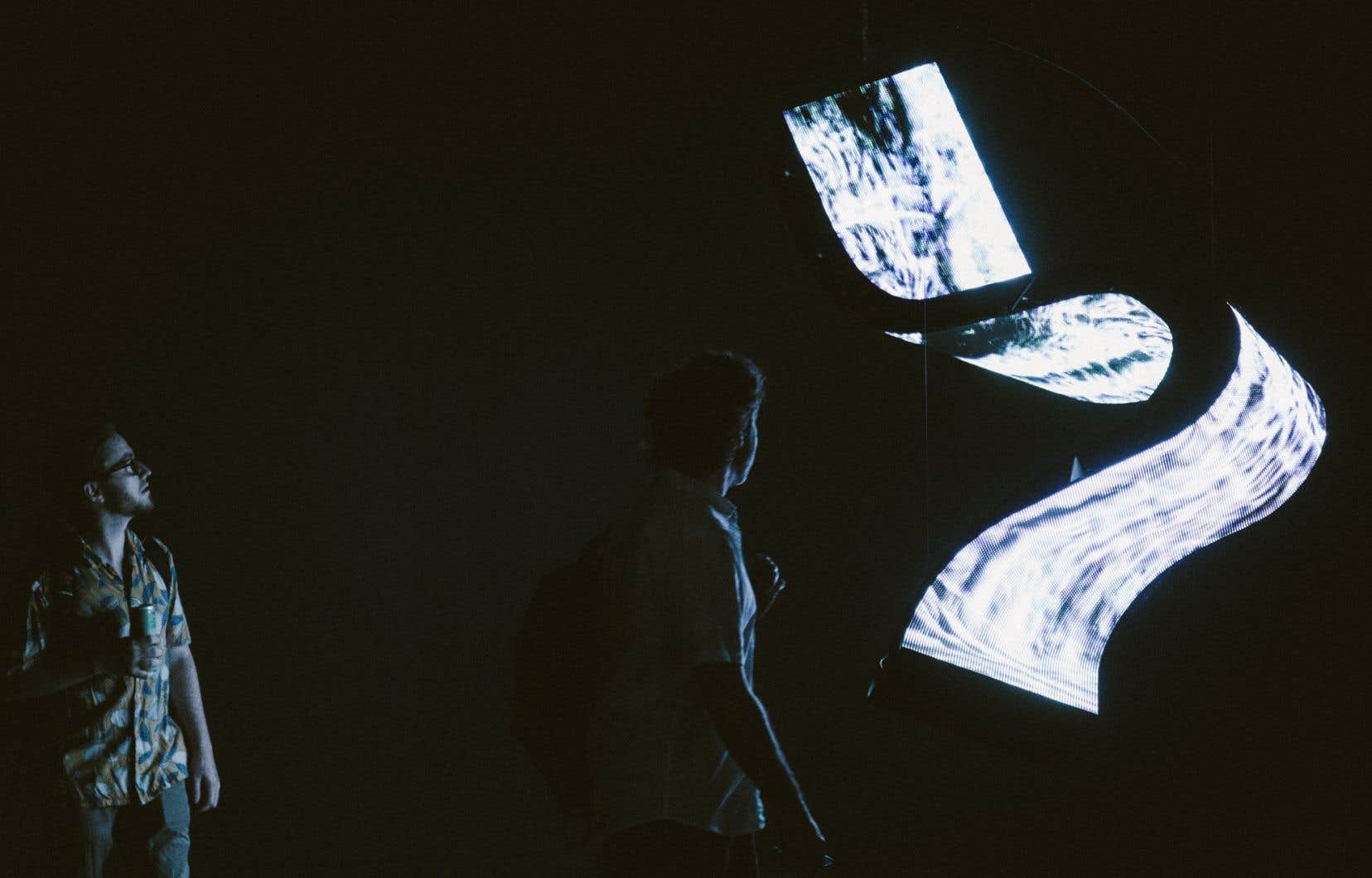In what ways can we take the pulse of a new otherness, which we ourselves have participated in bringing into the world and in constituting? How is the human experience traversed by our recent technological advances? What are the current and future repercussions of these intelligences that are now staring us in the face?
Curated by Alain Thibault, the latest edition of Elektra considers these questions, and many others, by deploying an impressive collection of works that show, divert, metamorphose, reverse and transfigure reality. The theme given to it, “Illusion”, opens the door to new discussions on the post-factual era that is currently shaking humanity. By encouraging us to separate truth from falsehood, it shows, even demonstrates, that digital technology has now infiltrated our perceptions of the world, now implying much more multiple and complex readings of what surrounds us.
Crossed Intelligences
Standing in the immense warehouse that serves as a gallery for Arsenal Contemporary Art, the work Organism + Excitable Chaos by artist Navid Navab, created in collaboration with sound engineer and instrument maker Garnet Willis, captures our attention as soon as we enter the room. Eye-catching, the device resembles an organ whose original sounds and mechanisms have been deconstructed in order to make it follow the steps of hypnotic robotics. And that’s exactly it. Navab and Willis configure this instrument together, whose pipes were taken from an ancestral organ found in Montreal. Controlled by a chaotic pendulum, whose only kinetic movement allows rotation, the monumental object emits desynchronized and repeated sounds, sometimes harmonious and sometimes mechanized. The artists offer the device the luxury of an interpretation of chaos: technology now has the power to make the reinvented organ blow noises never produced before.
Navab’s proposal punctuates a space covered with screens, sometimes playing infinite video frames, sometimes accompanied by microphones or cameras to activate AI and other hidden systems. This is the case of the project Surveillance² by Louis-Philippe Rondeau, which presents a double screen storing dozens of scanned portraits. As we contemplate them, a camera captures our image, immortalizing us in turn… against our will. The approach, while humorous, camouflages the ethical issue of this unauthorized image capture, evoking the blind spots of our technocentric era. Not far away, we can order an AI, by means of a single sentence dictated into a microphone, a panorama of images. The process imagined by David Rokeby, halfway between immersive installation and performance, processes the request the second it is submitted, generating said panorama in real time on a giant screen. Clearly, these projects redefine our understanding of technologies: far from being untouchable, they are now malleable, so close to us and at the same time so distant from our understanding of them.
“Deepfakes” and other illusionist tactics
In addition to a few installation projects, the thirty or so artists invited to be part of the exhibition favor various avenues that stage the image in many forms: static, dynamic, continuous. Among the most interesting proposals, we find in particular the polemical photography Pseudomnesia, by photo-media artist Boris Eldagsen, awarded the Sony World Photography Prize in 2023 before its author announced that it had in fact been entirely generated by AI. Eldagsen, by refusing the honor, opened a wide discussion on the capacity of technologies to blur the boundaries between proof and its falsification, between the original document and its fake copy. Next to it are shown other of his “photographic” works, this time from the series Mirror Series. Always artificially generated, the latter take up the same strategy which is based on the creation of false memories. Together, these works propose in a frontal manner an alternative conception of the truth.
Other pieces address similar questions using hyper-trickery, the generation of images or videos by semi- or completely autonomous technological software, or the simulation of new space-times coming straight from the metaverse. These numerous experiments paint a condensed and effective portrait of the implications of the current omnipresence of digital technology in our daily lives. Elektra is both critical and focused on the ingenuity and engineering that these new mechanisms require. It still manages to keep an important place for poetic and contemplative proposals, softening the way we look at technologies and the conclusions we might be tempted to draw following our journey.
